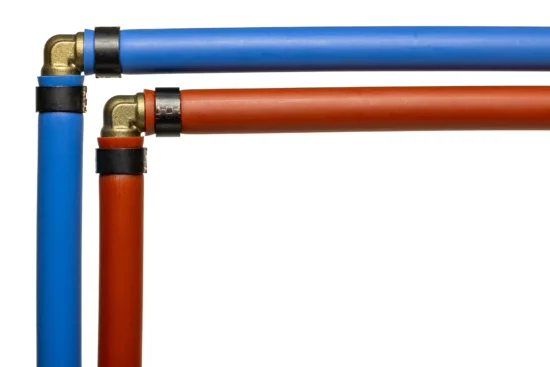When you’re planning a plumbing upgrade or a full repipe, the type of piping you choose makes a big difference in performance, cost, and ease of installation. PEX piping has become one of the top choices in homes across California—but there’s more than one kind. The two most common types are PEX-A and PEX-B, and while they might look similar, they behave very differently.
At Roto-Rooter, we’ve installed both types in homes throughout the state. Whether you’re coordinating a remodel, or planning a full repipe, knowing the difference between PEX-A and PEX-B can help you make a more informed decision.
What is PEX-A?
PEX-A is known for its flexibility and ease of installation. It’s made using the Engel method, which creates the highest degree of cross-linking among all PEX types. That results in a pipe that’s extremely pliable and capable of handling tight bends without breaking or cracking. It’s especially useful in remodels or retrofits where working around existing structures is necessary.
Here’s what makes PEX-A a popular choice:
• It can bend around corners with minimal fittings
• If the pipe kinks, it can often be repaired with a heat gun rather than replaced
• It has a slight ability to expand, making it more freeze-resistant
PEX-A uses expansion fittings, which involve stretching the pipe slightly using a tool and then inserting a fitting that the pipe contracts around for a tight seal. This method takes some skill and the right tools, but creates strong, long-lasting connections.
Homeowners should be aware that some notice a faint plastic taste in their water with PEX-A, particularly on hot lines, though this usually fades with use. Like all PEX, it’s also not UV-resistant and should be kept out of sunlight.
What is PEX-B?

PEX-B is stiffer and slightly less flexible, but it brings its own strengths to the table. Manufactured using the Silane method, PEX-B has a tighter molecular structure that gives it excellent burst strength—making it a great choice for high-pressure situations.
PEX-B is a favorite among builders and plumbers working on new construction or full home repipes. It doesn’t bend as easily, so you’ll likely need to use more fittings in tight spaces. However, it’s more budget-friendly and installs quickly using simple crimp or cinch-style fittings.
Key characteristics of PEX-B:
• High pressure resistance, great for main water lines
• Typically costs less than PEX-A
• Slightly more rigid, requiring more elbow fittings
The fittings for PEX-B are either copper crimp rings or stainless-steel cinch clamps, and they require tools like a crimping tool and a go/no-go gauge to ensure a tight seal. Unlike PEX-A, kinks in PEX-B need to be cut out and replaced.
Many homeowners find that PEX-B has fewer issues with water taste or odor, and it’s a proven, reliable choice when installed properly by an experienced professional.
PEX-A vs. PEX-B: Side-by-Side Comparison
| Feature | PEX-A | PEX-B |
|---|---|---|
| Flexibility | Very flexible | Moderately flexible |
| Cost | More expensive | More affordable |
| Fitting Type | Expansion fittings (F1960) | Crimp/clamp fittings (F1807/2098) |
| Freeze Resistance | Expands, less likely to burst | May burst under extreme freeze |
| Kink Repair | Heat gun can fix kinks | Damaged sections must be replaced |
| Taste/Odor | May have slight plastic taste | Usually minimal |
| UV Resistance | Low | Low |
| Tool Requirements | Expansion tool | Crimp or cinch tool + gauge |
Which One Should You Choose?
Your best option depends on your specific plumbing needs. PEX-A is ideal for remodels, tight corners, and situations where flexibility is critical. It’s often the go-to for homeowners working with a plumber in Sacramento on older home upgrades. Its ability to handle freezing conditions also makes it a good choice for colder climates or homes with exposed piping.
PEX-B, on the other hand, is perfect for full repipes or new construction, especially where long straight runs are required. It’s cost-effective, strong, and widely used in large-scale installations. If you’re working with a plumber in Stockton, there’s a good chance PEX-B will be the recommendation for a whole-home plumbing overhaul.
In the Central Valley, where homes can vary greatly in layout and age, PEX-B is also a great fit for straightforward repiping jobs. If you’re consulting with a plumber in Bakersfield, they can walk you through which option works best for your structure and budget.
Need Help Choosing or Installing PEX?
At Roto-Rooter, we’ve installed thousands of feet of PEX-A and PEX-B across California. Whether you’re replacing old galvanized lines, remodeling your kitchen, or building new from the ground up, we’re here to help you choose the right pipe and get the job done right.
Call or schedule online today to speak with your local Roto-Rooter plumbing expert.